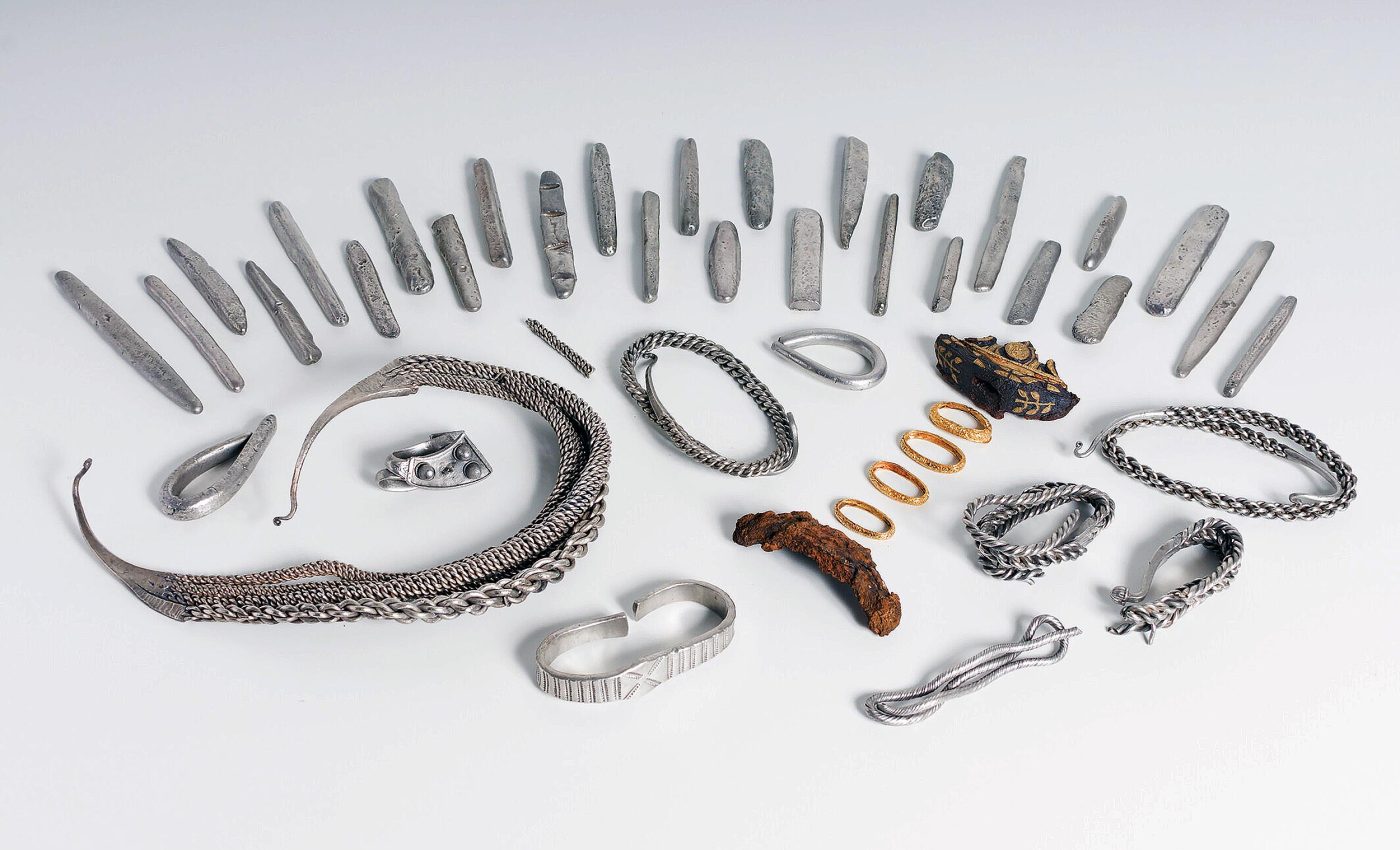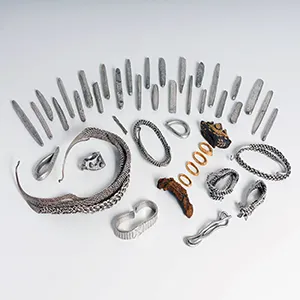
Remarkable Viking silver hoard discovery reveals far-reaching global trade links
History often remembers the Vikings as fierce raiders who swept across Europe in search of silver and gold treasure and artifacts. Yet, new scientific discoveries reveal a more intricate story.
Silver, a symbol of wealth and power, was not just plundered but also traded, refined, and carried across vast distances.
The Bedale hoard, unearthed in North Yorkshire, offers a unique window into this overlooked side of Viking life.
Through cutting-edge scientific analysis, researchers uncovered how Viking treasure connects England not only to its European neighbors but also to distant Islamic lands.
These findings highlight how Viking wealth was tied to global trade networks that reached far beyond the battlefield.
Vikings and the silver network
Led by Dr. Jane Kershaw of the School of Archaeology, University of Oxford, the research traced the origins of silver in the Bedale hoard, discovered in 2012.
The findings show that Vikings drew not only from local raids but also from long-distance trade reaching into the Islamic world.
Geochemical analysis confirmed that while much of the silver came from western Europe – likely Anglo-Saxon and Carolingian coinage – a substantial portion originated from Islamic dirhams.
These coins traveled through Scandinavian trade routes before reaching England.
The hoard, with 29 silver ingots and elaborate neck-rings, dates to the late ninth or early tenth century. Its variety highlights the cultural and economic blending in Viking Age England.
This study challenges the idea that Viking wealth came only from looting.
Beyond raiding and looting
“Most of us tend to think of the Vikings primarily as raiders, who looted monasteries and other wealthy places in search of wealth. What the analysis of the Bedale hoard shows is that that is only part of the picture,” noted Dr. Jane Kershaw.
She explained that while the Vikings did engage in looting and pillaging – with some of that wealth preserved in the rings and ingots found in the hoard – they also profited significantly from long-distance trade routes connecting northern Europe to the Islamic Caliphate.
“We can now see that they brought large quantities of this Islamic silver with them when they established settlements in England,” Dr. Kershaw continued.
Reflecting on the significance of the find, she added: “I love to think how Bedale – today a quintessentially English market town in north Yorkshire – was, in the Viking Age, at the heart of a much wider, Eurasian Viking economy.”
The Vikings weren’t only extracting wealth from the local population, they were also bringing wealth with them when they raided and settled.
Tracing the silver origins
The research team used lead isotope and trace element analyses to pinpoint the silver’s origins. They identified three main sources: western European coinage, Islamic dirhams, and blended sources.
Nine ingots – almost a third of the collection – were traced directly to the Islamic Caliphate, particularly regions corresponding to modern-day Iran and Iraq.
This silver traveled through the Austrvegr, the eastern trade routes, before reaching Scandinavia and later England.
The movement of these coins demonstrates the reach of Viking trade networks. It shows how far-flung economic connections fed into local settlements.
Vikings mixed silver with skills
The findings also suggest that Viking metalworkers refined some of the silver with local lead, particularly from the North Pennines. This indicates advanced metalworking skills and regional production.
One striking artifact, a large neck-ring made from twisted rods, was created using a mix of eastern and western silver. The craftsmanship points to innovation and adaptation in northern England.
The Archaeometry study adds that mixing silver sources was not random. Instead, it was deliberate, reflecting choices to maintain consistent silver quality and weight standards across regions.
Such practices suggest that Viking metalworkers were highly skilled, operating with knowledge of purity levels and alloying techniques.
Expanding the Viking history books
The analysis adds to growing evidence that Viking wealth came from multiple strategies. Military campaigns and tribute collection remained important, but commercial exchange played a central role.
Silver coins were melted down, recast, and shaped into jewelry and ingots, circulating within the Scandinavian bullion economy.
The study also highlights how silver acted as more than wealth. It was a medium of exchange in a bullion-based economy, where ingots and jewelry could be weighed and traded like currency.
This system supported both local markets and international trade, embedding Viking communities into a wider economic network.
The research emphasizes how advanced scientific methods can reveal hidden layers of history. By examining the silver itself, researchers uncovered the complexity of Viking settlement and integration in England.
The findings are published in Archaeometry, offering fresh insights into how Vikings balanced raiding with global trade.
—–
Like what you read? Subscribe to our newsletter for engaging articles, exclusive content, and the latest updates.
Check us out on EarthSnap, a free app brought to you by Eric Ralls and Earth.com.
—–














